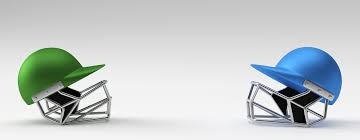When it comes to cricket, your helmet isn’t just another piece of gear—it’s your first line of defense against serious injury. A well-chosen helmet can make all the difference between playing with confidence and risking your safety. Yet, many players—especially beginners—end up making simple but costly mistakes when buying one. Let’s take a closer look at the most common helmet-buying mistakes and how you can avoid them.
1. Ignoring the Fit
One of the biggest mistakes cricketers make is choosing a helmet that doesn’t fit properly. A helmet that’s too tight can cause discomfort, while one that’s too loose can shift during play and reduce protection.
Tip: Always try on your helmet with the strap fastened. It should feel snug but comfortable, and it shouldn’t move when you shake your head.
2. Choosing Style Over Safety
It’s easy to get swayed by a helmet’s color or design, but looks should never come before protection. Some players prioritize matching their kit over picking a helmet with the right safety standards.
Tip: Always check that the helmet meets BS 7928:2013 or NOCSAE safety standards—these certifications ensure the helmet can withstand high-impact cricket balls.
3. Overlooking the Grill Type
The grill (or faceguard) is crucial for protecting your face and eyes. Many players either go for a cheaper steel grill that compromises visibility or forget to adjust the gap properly.
Tip: Whether you choose steel or titanium, make sure the grill is positioned so that no ball can fit between the peak and the top bar.
4. Not Considering the Playing Level
A weekend club player doesn’t need the same helmet as a professional facing 90 mph deliveries—but you still need adequate protection for your level.
Tip: Choose a helmet suited to your playing intensity. Junior, club, and pro-level helmets are designed differently to balance weight, ventilation, and impact protection.
5. Ignoring Comfort and Ventilation
A helmet that feels heavy or traps heat can be distracting on the field. Players often overlook ventilation, only to realize how uncomfortable it gets during long innings.
Tip: Look for helmets with strategic air vents and sweat-absorbing inner padding to keep your head cool and dry.
6. Skipping a Proper Try-On
Buying online without checking the size chart or trying the helmet in person is a common error. Sizes vary by brand, and a “medium” in one brand might fit like a “small” in another.
Tip: Always measure your head circumference and consult the brand’s specific sizing guide. If possible, try the helmet before you buy.
7. Ignoring Replacement and Maintenance
Helmets don’t last forever. Many players continue using old helmets even after they’ve taken a hit or show signs of wear and tear.
Tip: Replace your helmet every few years or immediately if it suffers a major impact. Regularly inspect the grill, straps, and padding.
Final Thoughts
Your cricket helmet is an investment in your safety. Avoiding these common mistakes ensures you get the protection, comfort, and confidence you need every time you step onto the field. Whether you’re playing a friendly match or competing in a league, remember: a properly fitted, certified helmet is non-negotiable.
